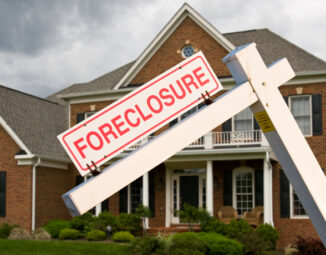Everyone Likes a Good Deal, but are Land Bank Properties a Good One?
According to ATTOM Data Solutions, as of the end of the third quarter of 2018, there were nearly 1.5 million vacant single-family homes in the United States, representing approximately 1.52 percent of all homes nationwide. Moreover, nearly 15% of all land in the US is deemed vacant or abandoned, comprising an area roughly the size of Switzerland. A direct consequence of the high number of vacant properties is an increase in the number of “blighted” properties. Generally speaking, a property is blighted if it is in a state of significant physical deterioration or is otherwise unsafe due to environmental factors, fire hazards, or building code violations. Properties often become blighted after having been abandoned by the owners, who may not have had clear title or were burdened by delinquent taxes far in excess of the value of the property. Once abandoned, these properties eventually reach a state of deterioration that would require repairs at a cost far beyond what could be earned back in the private market. Left in their blighted condition, the properties are destabilizing neighborhoods and adversely impacting nearby property values.
Several states have enacted legislation that creates a new tool, the land bank, to deal with this growing inventory of blighted properties the private sector has, for one reason or another, rejected. In Pennsylvania, for example, the PA Land Bank Act 153 of 2012 authorizes the establishment of a public entity, also known as a land bank, to “confront the problems caused by vacant abandoned and tax-delinquent properties through the creation of new tools to enable municipalities to turn vacant, abandoned and tax-delinquent spaces into vibrant places.”
Land banks have proven to be quite effective in reducing urban blight and returning such properties to public use. They also provide opportunities for investors who are interested in acquiring properties at a significantly reduced cost in most situations or at a nominal cost if the investor agrees to develop the property as affordable housing.
Land banks are intentionally structured to allow greater flexibility in the acquisition and disposition of blighted properties in order to circumvent, as much as possible, the various issues that caused the property to become blighted in the first place. For example, some states allow land banks to acquire tax-delinquent properties through direct purchase rather than through competitive bidding, to file bulk quiet title actions that can be completed in as few as 120 days, to hold the property up to five years tax-free, and to discharge tax liens. Land banks are also given a great deal of discretion in setting sales. This is accomplished through alternative price setting, in essence subsidizing the re-entry of these properties into the private market. These various powers enable the land bank to acquire, stabilize and return to productive use those properties that are considered to have the most blighting influence in a community.
The procedures for acquiring land-bank owned properties depend on the internal policies of each land bank. Generally speaking, prospective buyers need to meet certain financial guidelines in order to be eligible to purchase land-bank owned properties. Additionally, a prospective buyer will be disqualified if the prospective buyer owns other properties and any of those properties are subject to citations or building code violations. The properties may be sold subject to certain use restrictions, but as already noted, a commitment to develop the property as affordable housing could mean little or no acquisition cost at all.
There are, of course, certain pitfalls and risks involved in purchasing properties from a land bank. These properties almost always are heavily encumbered or were in the past so it is crucial to make sure that the property is free and clear of any liens, including unpaid utilities and taxes. Purchasers are usually responsible for all closing costs associated with the acquisition of the property. If the property includes an existing structure, its physical condition is likely beyond repair and so the cost of demolishing should be taken into consideration. Finally, there are almost always restrictions on resale that discourage flipping.
Nevertheless, if developed sensibly, land-bank owned properties represent an opportunity for private investors to acquire residential and commercial properties at a significantly discounted price, thereby increasing the likelihood of a profitable return in the future. Moreover, making use of land banks as an investment source revitalizes blighted neighborhoods while improving the tax base, which benefits not only the investor, but the surrounding neighborhoods as well.
A brochure from the Department of Housing and Urban Development explaining the formation and operation of land banks can be found here. If you have further questions regarding developing land banks, please contact Peter Lewis at peter.lewis@obermayer.com.



